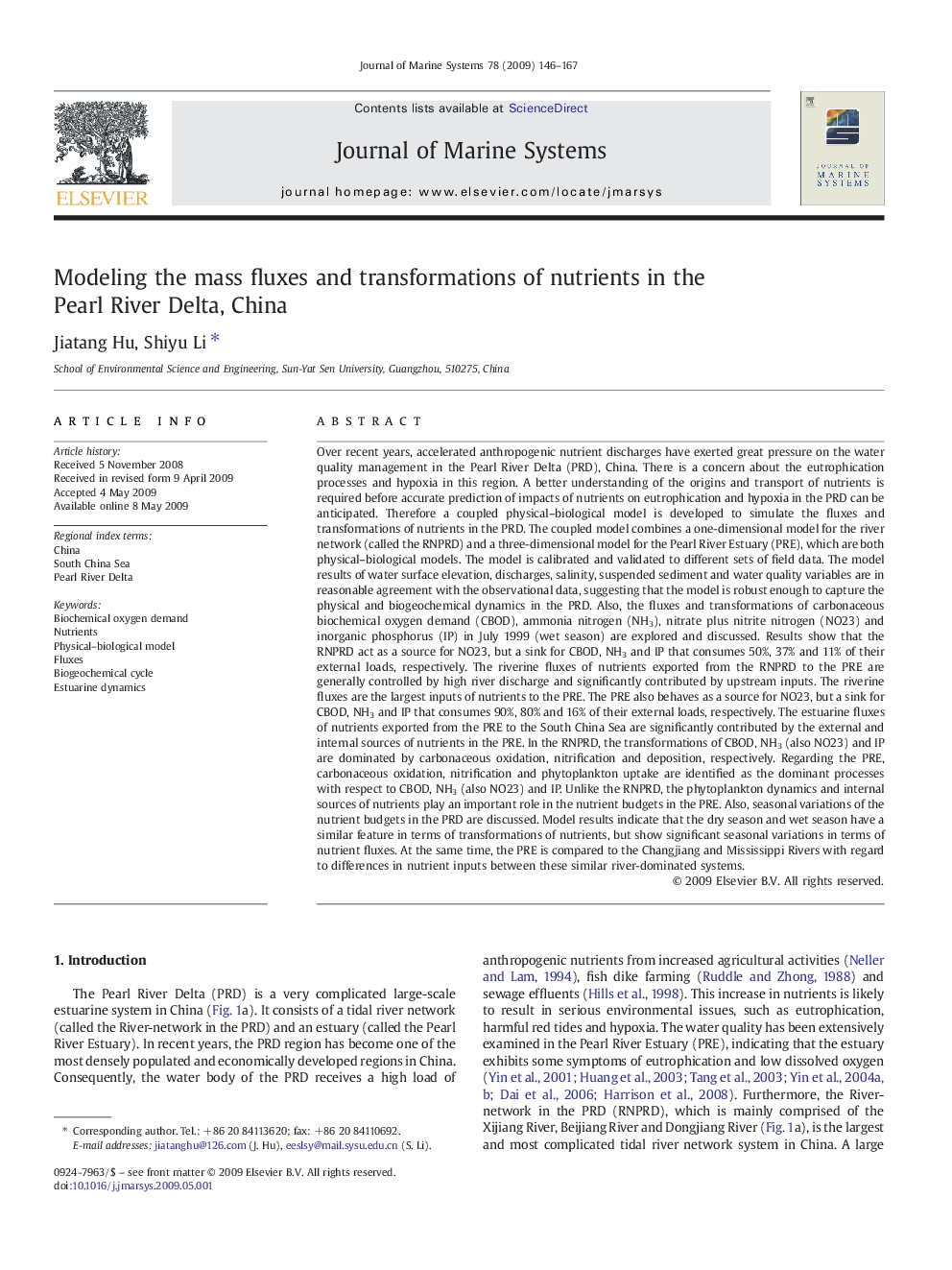| کد مقاله | کد نشریه | سال انتشار | مقاله انگلیسی | نسخه تمام متن |
|---|---|---|---|---|
| 4548871 | 1327933 | 2009 | 22 صفحه PDF | دانلود رایگان |

Over recent years, accelerated anthropogenic nutrient discharges have exerted great pressure on the water quality management in the Pearl River Delta (PRD), China. There is a concern about the eutrophication processes and hypoxia in this region. A better understanding of the origins and transport of nutrients is required before accurate prediction of impacts of nutrients on eutrophication and hypoxia in the PRD can be anticipated. Therefore a coupled physical–biological model is developed to simulate the fluxes and transformations of nutrients in the PRD. The coupled model combines a one-dimensional model for the river network (called the RNPRD) and a three-dimensional model for the Pearl River Estuary (PRE), which are both physical–biological models. The model is calibrated and validated to different sets of field data. The model results of water surface elevation, discharges, salinity, suspended sediment and water quality variables are in reasonable agreement with the observational data, suggesting that the model is robust enough to capture the physical and biogeochemical dynamics in the PRD. Also, the fluxes and transformations of carbonaceous biochemical oxygen demand (CBOD), ammonia nitrogen (NH3), nitrate plus nitrite nitrogen (NO23) and inorganic phosphorus (IP) in July 1999 (wet season) are explored and discussed. Results show that the RNPRD act as a source for NO23, but a sink for CBOD, NH3 and IP that consumes 50%, 37% and 11% of their external loads, respectively. The riverine fluxes of nutrients exported from the RNPRD to the PRE are generally controlled by high river discharge and significantly contributed by upstream inputs. The riverine fluxes are the largest inputs of nutrients to the PRE. The PRE also behaves as a source for NO23, but a sink for CBOD, NH3 and IP that consumes 90%, 80% and 16% of their external loads, respectively. The estuarine fluxes of nutrients exported from the PRE to the South China Sea are significantly contributed by the external and internal sources of nutrients in the PRE. In the RNPRD, the transformations of CBOD, NH3 (also NO23) and IP are dominated by carbonaceous oxidation, nitrification and deposition, respectively. Regarding the PRE, carbonaceous oxidation, nitrification and phytoplankton uptake are identified as the dominant processes with respect to CBOD, NH3 (also NO23) and IP. Unlike the RNPRD, the phytoplankton dynamics and internal sources of nutrients play an important role in the nutrient budgets in the PRE. Also, seasonal variations of the nutrient budgets in the PRD are discussed. Model results indicate that the dry season and wet season have a similar feature in terms of transformations of nutrients, but show significant seasonal variations in terms of nutrient fluxes. At the same time, the PRE is compared to the Changjiang and Mississippi Rivers with regard to differences in nutrient inputs between these similar river-dominated systems.
Journal: Journal of Marine Systems - Volume 78, Issue 1, August 2009, Pages 146–167